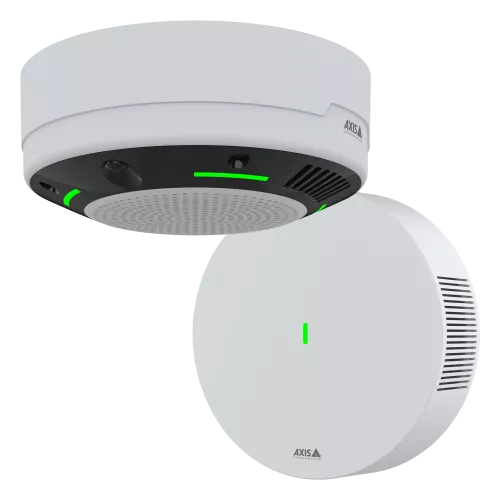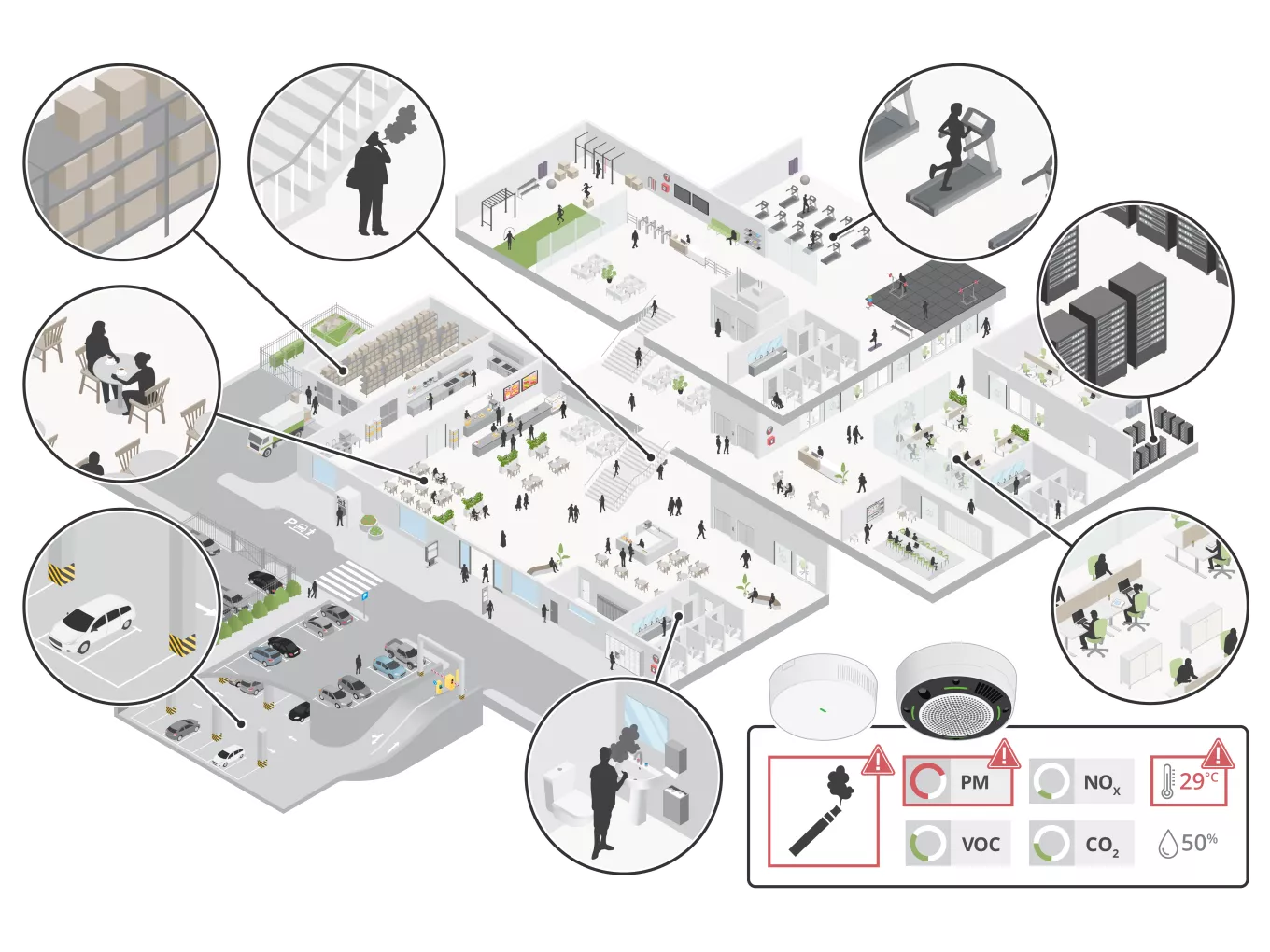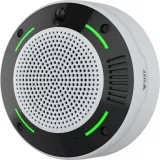Environmental sensors

Expand and enhance your system with Axis environmental sensors. They can monitor indoor air quality (IAQ) to detect air pollutants, so you can ensure healthy indoor environments and show compliance with health regulations.

Improve well-being with healthier air
Air pollution is a major health risk and poor IAQ can lead to respiratory issues and increase the risk of chronic illnesses such as asthma. In fact, according to the Institute for Health Metrics and Evaluation, air pollution causes millions of death each year. Different regulations set IAQ standards to protect public health. For instance, the World Health Organization (WHO) provides guidelines on air pollutants, while agencies such as the U.S. Environmental Protection Agency (EPA) and the European Environment Agency (EEA) regulate and enforce indoor air standards. Such regulations are essential to ensure healthy indoor environments worldwide.
For a better, sustainable environment
Green building certifications are used to verify a building's performance in areas such as energy efficiency, water conservation, indoor air quality, and waste management. Environmental sensors can help fulfill requirements for these green credentials. For instance, Axis air quality sensors can monitor IAQ by detecting vaping and smoking as well as air pollutants such as particle matter (PM), volatile organic compounds (VOC), nitrogen oxides (NOx), and carbon dioxide (CO2). They can also measure temperature and relative humidity (RH). These sensors make it easy to manage indoor air quality to ensure its adequacy, providing an efficient way of working with sustainability. For instance, they can help you reduce energy waste, improve efficiency, and protect health.

Supporting use cases in various segments
Axis environmental sensors can be used to support different use cases in various segments. They can support applications within health and safety environments (HSE), improve operational efficiency, and provide business intelligence. For example, they can be used in schools to help uphold vaping and smoking prohibitions. Or in retail stores, where poor air quality can negatively impact customer experience. In commercial real estate, they can be used as an integral part of the overall air quality management solution, helping contribute to smarter buildings. In addition, in data centers, they can ensure the temperature and relative humidity are correct, helping to prolong the life of equipment. They can also be used in healthcare environments, where they can detect insufficient air quality in patient rooms and areas where medicine is stored. Furthermore, within industrial and manufacturing sites, they can help ensure you adhere to strict regulations. These sensors can also help you document compliance with indoor air quality regulations. And, with access to air quality data, you can make long-term strategic decisions about your indoor environment.

